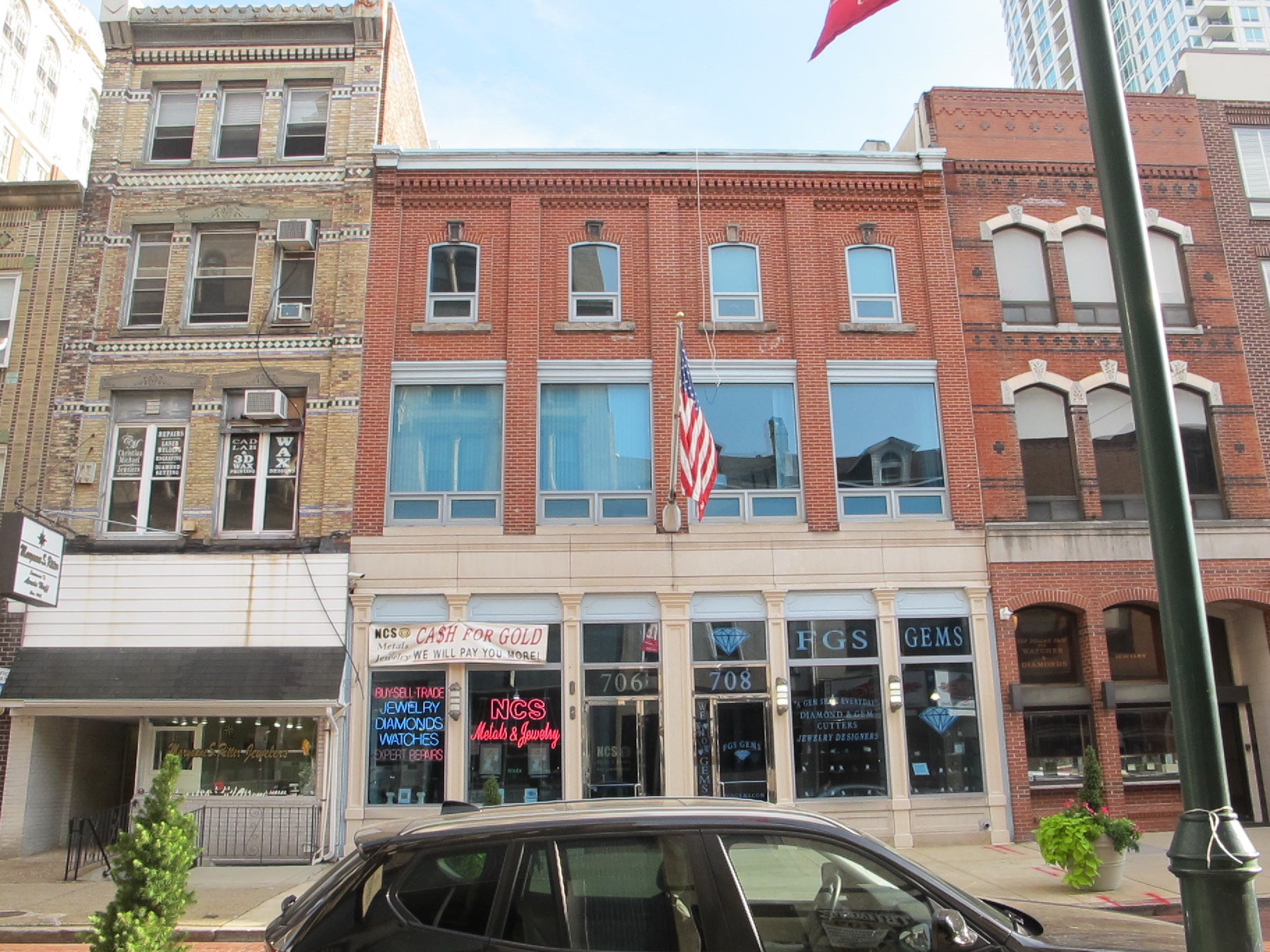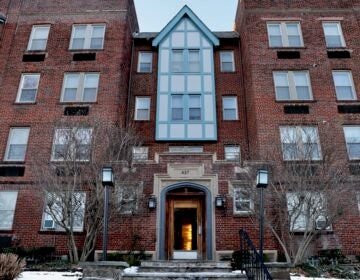Committee supports designation of two threatened Jewelers’ Row buildings

On Friday morning the Philadelphia Historical Commission’s Committee on Historic Designation voted unanimously to recommend the nominations of 706 and 704 Sansom Street to the local historic register. The full Philadelphia Historical Commission will consider designation on November 10.
The nominated buildings sit at the center of a set of buildings Toll Brothers aims to demolish to build a condo tower. Historic designation would significantly complicate, if not prevent, Toll’s plans for this development.
“Today went very well,” said Paul Steinke, executive director of the Preservation Alliance for Greater Philadelphia, which advanced the nominations, after the hearing on the properties concluded. Asked about his feeling on the nominations’ odds before the full commission, he said, “I’m confident the merits of the nomination speak for themselves.”
The hearing room was packed by supporters of the Preservation Alliance’s cause, many wearing “Save Jewelers’ Row” t-shirts. At one point, supporters of the nominations for 704 and 706 Sansom Street were asked to stand. Over half of the room rose to their feet. Advocates noted that they’d gathered over 6,700 signatures in favor of preservation as well.
The lawyers for the owners of the properties, and for Toll Brothers, had a petition of their own from 29 individuals whom own property on the block and oppose adding their buildings to the local register. The commercial fortunes of Jewelers’ Row are believed to be flagging, said property owner Roberto Pupo, and he sees the Toll Brothers project as a way to rejuvenate the area.
Those opposed to the historic designation also questioned the legitimacy of the nominations’ intent and noted that the owners of the properties of Jewelers’ Row were almost universally in favor of the Toll Brothers’ plan.
“You have 6,700 people who signed from all over the city, all over the world, and we have just 29 property owners, well I think it was Stalin who said, ‘in order to make an omelet you have to crack a few eggs,’” said Carl Primavera, a veteran zoning lawyer who represents Toll Brothers. “The populist sentiment is important and is a civic value, but people whose lives and very futures are tied up in these properties are finding the process concerning. Rather than having public debate and scholarship it comes as a kind of a guerilla warfare of a nomination.”
The Committee, which is comprised of preservation and architecture professionals, critiqued a few elements of the nominations presented by the Preservation Alliance of Philadelphia as well, although on very different grounds.
The nomination argues that the buildings are eligible for designation due to associations with particular architects, architectural styles, and the significance of their uses and people associated with each. The argument that the two structures were part of “a square, park or other distinctive area” was the only criterion that caused controversy.
The Historical Commission’ staff argued against that designation, and pushed for a more narrowly defined definition of that criteria. Historic Commission director Jon Farnham noted that many advocates try to utilize that criteria if the buildings they champion are on the national historic register, which the Jewelers’ Row buildings are, but that this is not the intent of the designation criteria.
But committee members argued that the area is especially distinctive and the other designation criteria applied—which focus more on the architectural and historical merits of the individual buildings—didn’t capture the entirety of the argument for preservation. The nomination for the 706 Sansom Street building relies heavily on the site’s long-term usage by Henry C. Lea, a famous publisher and historian with a public school in his name in West Philadelphia.
“I think in this case we do have a distinctive area that’s recognized by many people in Philadelphia for its character,” said architectural historian and committee member Jeff Cohen, in relation to the 706 Sansom building. “In some ways this is even more important than its Henry Lea connection, because this is a place with cohesive character, even with all its variety. That’s what makes it special.”
Commission members also critiqued the Preservation Alliance’s nomination for listing the buildings’ “period of significance” from 1877 to 1922, which was when the commercial district was still known as a printing district, overlapping with a jewelry district—even though much of the popular argument in support of the preservation cause centers around its current identity as one of America’s oldest jewelry districts.
Other speakers included Rick Spitzborg, vice-president of the Washington Square West Civic Association. The RCO’s board voted to support the nominations of the buildings on Tuesday evening.
“This building and other buildings on this street are part of the fabric of our neighborhood,” said Spitzborg. “The Preservation Alliance has documented that these buildings have a rich history, but more importantly they have given character to a street that holds an important place in the social and economic development of our city.”
Although the committee largely looked favorably upon the nominations, their purview is limited to a review of historic merits. Their recommendation to the larger Historic Commission, which can weigh other factors, is non-binding.
At the full Historic Commission meeting the representatives of Toll Brothers are likely to focus on the fact that the Preservation Alliance submitted their nomination after demolition permits had already been approved. Traditionally that has often meant that a preservation case is doomed, but a recent case on Chestnut Street may complicate that standard.
WHYY is your source for fact-based, in-depth journalism and information. As a nonprofit organization, we rely on financial support from readers like you. Please give today.





